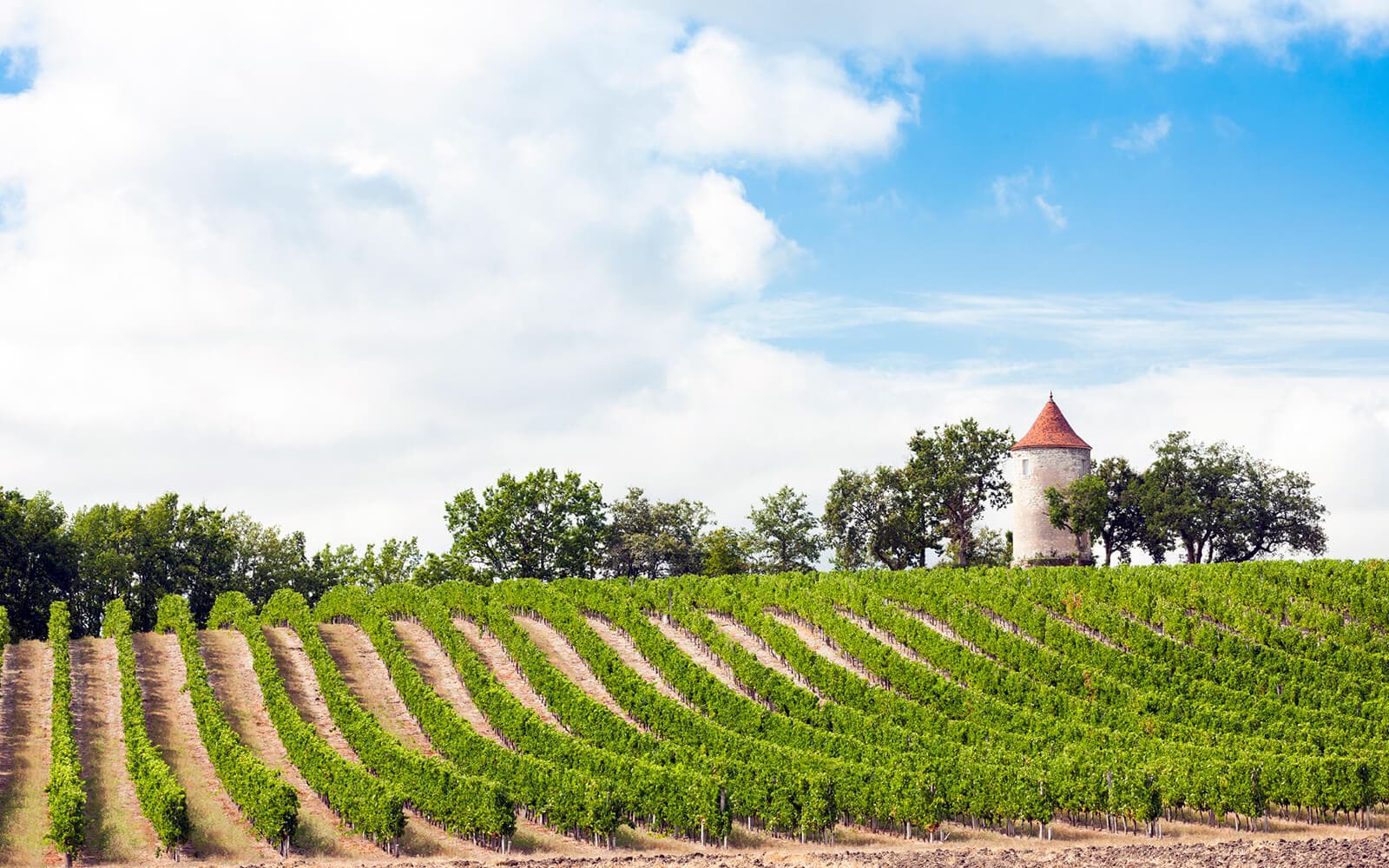Bordeaux is the world’s largest fine wine region, and one with a rich history dating back to the Romans. The wonders of this region were introduced to the world following Henry II’s marriage to Eleanor of Aquitaine; three centuries of courtly commerce with Great Britain ensured that claret was served at the finest foreign tables. (Even the Meiji Emperor of Japan, reigning in the 1800s, developed a taste for Sauternes!)

The five main red grape varieties in the Bordeaux region are: Cabernet Sauvignon, Cabernet Franc, Merlot, Petit Verdot and Malbec, with Cabernet the dominant grape on the west side of the Gironde, Merlot to the east. Almost all Bordeaux reds are a blend of two or more of the grape varieties. The most famous of the red Bordeaux wines, which represent less than five percent of the region’s total production, are often worthy of decades of bottle ageing.

Sauvignon Blanc and Sémillon are grown and often blended for both the sweet and the dry white wines of the region. About a quarter of all Bordeaux wine production is white. Small quantities of rosé, light red claret, sparkling crémant, and fine brandy are also made. With over 120,000 hectares of vines, the total quantity of wine produced each year is about 660 million bottles, which represents more than a quarter of France’s total appellation contrôlée wine production, but the total yield can vary quite considerably owing to the vagaries of the climate.

Médoc
 Médoc, the most famous red wine district in Bordeaux, and perhaps the world. The Médoc stretches northwest from the city of Bordeaux along the left bank of the Gironde estuary. The climate on this peninsula is Bordeaux’s mildest, moderated both by the estuary, and the Atlantic Ocean.
Médoc, the most famous red wine district in Bordeaux, and perhaps the world. The Médoc stretches northwest from the city of Bordeaux along the left bank of the Gironde estuary. The climate on this peninsula is Bordeaux’s mildest, moderated both by the estuary, and the Atlantic Ocean.
Pine forests protect the vineyards from strong winds off the ocean and help to moderate summer temperatures. While the Médoc possesses few distinctive geographical features, many hours have been spent charting the subterranean Médoc. The terroir is a special one, in particular, due to the gravel that is predominant. This allows for excellent drainage. The gravels of the Médoc are ideal in this respect and are particularly important in such a damp climate. In hotter vintages, mature vines can benefit from the extensive root systems encouraged by the gravel. The gravels of the Médoc also store valuable heat, thereby promoting the grapes to ripen. Experts say that the best vines of the Médoc grow within sight of the Gironde estuary.

Recommended bottles:
Reds
–Château Pichon Baron, 2nd Grand Cru, Pauillac, 2016
–Château Lafite-Rothschild, Pauillac, 2015
–Chateau Lagrange, Saint-Julien, 2016
Whites
–Chateau Couhins-Lurton, Graves Cru Classe, 2012
–Chateau Lestrille Capmartin, 2012
Sauternes
 The famous sweet white wine of Sauternes is a specialty that depends on local conditions and a very unusual winemaking technique. In great years, the results can be sublime: a very sweet, rich-textured, flower-scented, shining golden liquid. The special technique, one that few châteaux can afford to employ, is to pick over the vineyard as many as eight or nine times, starting in September and sometimes going on until November.
The famous sweet white wine of Sauternes is a specialty that depends on local conditions and a very unusual winemaking technique. In great years, the results can be sublime: a very sweet, rich-textured, flower-scented, shining golden liquid. The special technique, one that few châteaux can afford to employ, is to pick over the vineyard as many as eight or nine times, starting in September and sometimes going on until November.
This is to take full advantage of the peculiar form of mold (known as Botrytis cinerea to the scientist, or ‘noble rot’ to the poet) which forms on the grapes in a mild, misty autumn and reduces their skins to a brown pulp. Instead of giving the grapes a flavour of rot, the botrytis engineers the escape of a proportion of the water in them, leaving the sugar and the flavouring elements in the juice more concentrated than ever. The result is a wine with an intensity of taste and scent, and a smooth, oil-like texture.
Recommended bottles:
–Château d’Yquem, 2017
–Château Lafaurie-Peyraguey, 2014
–Chateau La Tour Blanche, 2013




